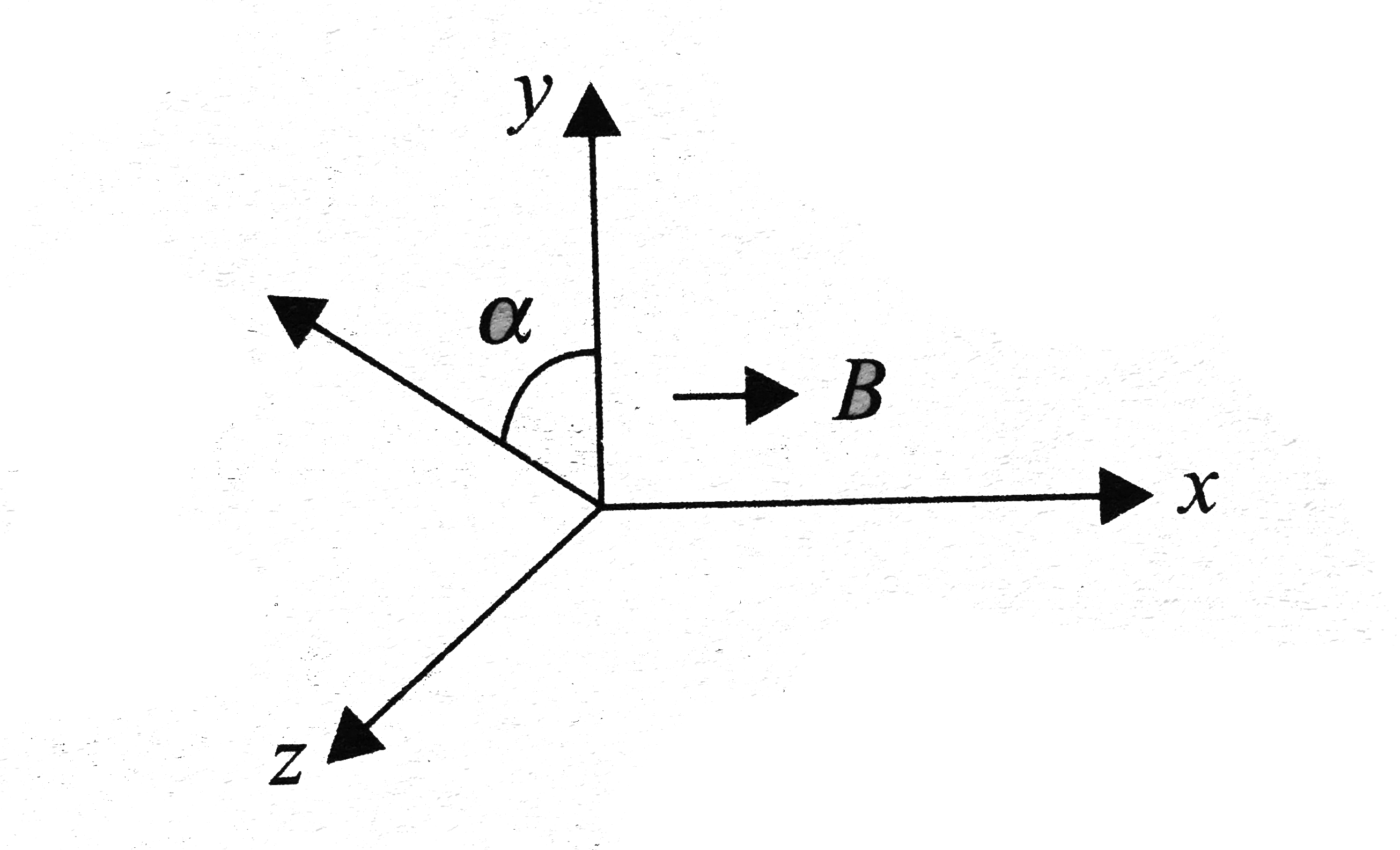In a region of space, a uniform magnetic field B exists in the x-direction. An electron is fired from the origin with its initial velocity u making an angle α with the y direction in the y-z plane. In the subsequent motion of the electron,

y-coordinate of the electron will never be negative
z-coordinate of the electron will never be negative
x-coordinate of the electron will never be negative
trajectory of the electron would be helical
The correct Answer is:c
We can see from trajectory that both y- and z-coordinates
can become negative.

This trajectory lies in y-z plane. So, x-coordinate is always zero.
Topper's Solved these Questions
- MAGNETIC FIELD AND MAGNETIC FORCESBook:CENGAGE PHYSICSChapter:MAGNETIC FIELD AND MAGNETIC FORCESExercise:Exercises Multiple Correct
Explore 25 Videos
- MAGNETIC FIELD AND MAGNETIC FORCESBook:CENGAGE PHYSICSChapter:MAGNETIC FIELD AND MAGNETIC FORCESExercise:Exercises Assertion -reasoning
Explore 8 Videos
- MAGNETIC FIELD AND MAGNETIC FORCESBook:CENGAGE PHYSICSChapter:MAGNETIC FIELD AND MAGNETIC FORCESExercise:Exercises Subjective
Explore 10 Videos
- KINETIC THEORYBook:CENGAGE PHYSICSChapter:KINETIC THEORYExercise:Question Bank
Explore 31 Videos
- Magnetism and MatterBook:CENGAGE PHYSICSChapter:Magnetism and MatterExercise:Question Bank
Explore 50 Videos
Similar Questions
In a region of space, a uniform magnetic field B is along positive x-axis. Electrons are ernit.u.d from the origin with speed u at different, angles. Show that the paraxial electrons are refocused on the x-axis at a distance 2πmvBe. Here, m is the mass of electron and e the charge on it.
View SolutionA uniform electric field and a uniform magnetic field exist in a region in the same direction. An electron is projected with a velocity pointed I the same direction. Then the electron will:
View Solution
Knowledge Check
In a region of space, a uniform magnetic field B exists in the y-direction A proton is fired from the origin, with its initial velocity v making a small angle alpha with the y-direction in the yz plane. In the subsequent motion of the proton
 .Aits x-coordinate can never be positive .Bitsx-and z-coo rdinates cannot both be zero at the same timeCits z-coordinate can never be negativeDits y-coordinate will be proportional the the square of its time of flight .
.Aits x-coordinate can never be positive .Bitsx-and z-coo rdinates cannot both be zero at the same timeCits z-coordinate can never be negativeDits y-coordinate will be proportional the the square of its time of flight .A uniform electric field and a uniform magnetic field are produced, pointed in the same direction. An electron is projected with its velocity pointing in the same direction. Then,
Athe electron will turn to its rightBthe electron will turn to its leftCthe electron velocity will increase in magnitude.Dthe electron velocity will decrease in magnitude.A uniform electric field and a uniform magnetic field are produced, pointed in the same direction. An electron is projected with its velocity pointing in the same direction.
AThe electron will turn to its rightBThe electron will trun to its leftCThe electron velocity will increase in magnitudeDThe electron velocity will decrease in magnitude
A uniform electrif field of intensit E is in the Y-negative direction. An electron of mass m and charge e is fired through the origin with initial velocity u in the X-positive direction. The displacement undergone of the electron during a time interval t is
View SolutionA uniform electric field and a uniform magneitc field exist in a region in the same direction An electron is projected with velocity pointed in the same direction the electron will
View SolutionA region has a uniform magnetic field in it. A proton enters into the region with velocity making an angle of 45° with the direction of the magnetic field. In this region the proton will move on a path having the shape of a
View SolutionA uniform electric field and a uniform magnetic field are acting along the same direction in a certain region. If an electron is projected in the region such that its velocity is pointed along the direction of fields, then the electron
View SolutionA uniform electric field and a uniform magnetic field are acting along the same direction in a certain region. If an electron is projected in the region such that its velocity is pointed along the direction of fields, then the electron
View Solution